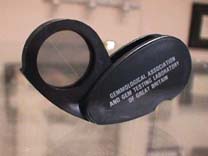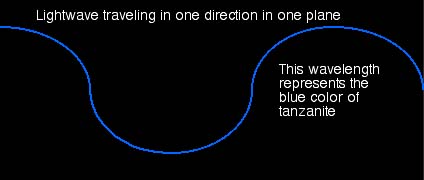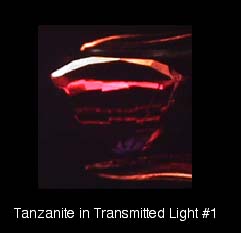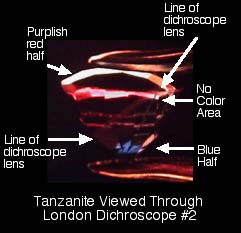 |
General Information What is it?: This is a simple but highly important gemological tool that allows the gemologist to view the separate colors that a gemstone produces, as it selectively absorbs certain wavelengths of light, while allowing others to pass through to the viewer. Many gemstones, such as garnet, spinel, and diamond, are single refractive and therefore offer only one color to the viewer. But most other gemstones are double refractive, meaning that they produce two or more colors of transmitted light...most of which the human eye cannot separate because they are so close in wavelength or color, that they cannot be separated by our eyes and seen as individual colors. The exceptions being tanzanite and andalusite, to name two, that offer colors that are so different that our eyes can actually see the two or more colors without the need of any gemological equipment. But for the most part, gemstones offer two or more colors that our eyes put together to make the final visible gemstone color that we see. For instance, a medium red ruby is made of a dark red and a light pink color. Put the two together and you get medium red. But look at it through a dichroscope and you can separate and see the dark red and lighter pink. Which is an important tool in separating ruby from red spinel, for instance. Since red spinel is single refractive and only offers one color of red, while a ruby will offer the two colors. This is the importance of the dichroscope and why no gemologist should be without one. Why it works: Light travels in waves...just like the waves on an ocean. And the shorter the wave the more blue the color, the longer the wave the more red the color. The dichroscope works on the concept of plane polarized light. This is light that has been separated out from the ordinary ambient light into its specific wavelength and specific direction of travel. With, for instance, one wave traveling up and down, and with another traveling side to side. By separating these beams into their specific plane of travel, we are able to view the individual colors being generated by the specific wavelengths. As shown below:

Tanzanite in regular transmitted light and through a London dichroscope below: (please note that colors vary due to internet transmission)
The dichroscope allows us to easily view these individual directions that light is traveling and, therefore, see the individual colors. To learn more about the use of this important gemological tool please join us in the study of gemology: International School of Gemology You can purchase your gemological equipment direct from YourGemologist by clicking the image below. |
© Copyright 2014 All Rights Reserved. Please read the fine print below: The information contained in this website is offered free of charge to anyone wishing to learn more about gemology. The information may be downloaded by any student, consumer, or jeweler for your own personal study and use. None of this site can be downloaded for posting on another website or server for any reason. It will be a violation of the copyright for anyone to copy, duplicate, distribute, and/or re-print this material in any format or any medium without written permission. Nor can anyone post this information on a for-profit website without written permission. That will ruin it for everyone and cause the entire site to be erased and canceled. Please honor this copyright for the good of everyone else. Robert James FGA, GG.....YourGemologist |
 Dichroscope
Dichroscope 


